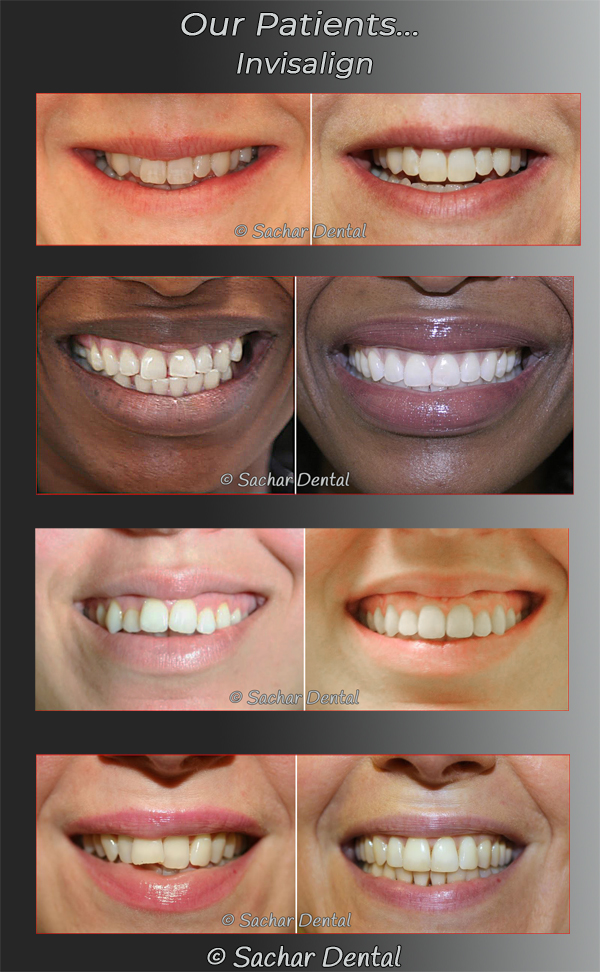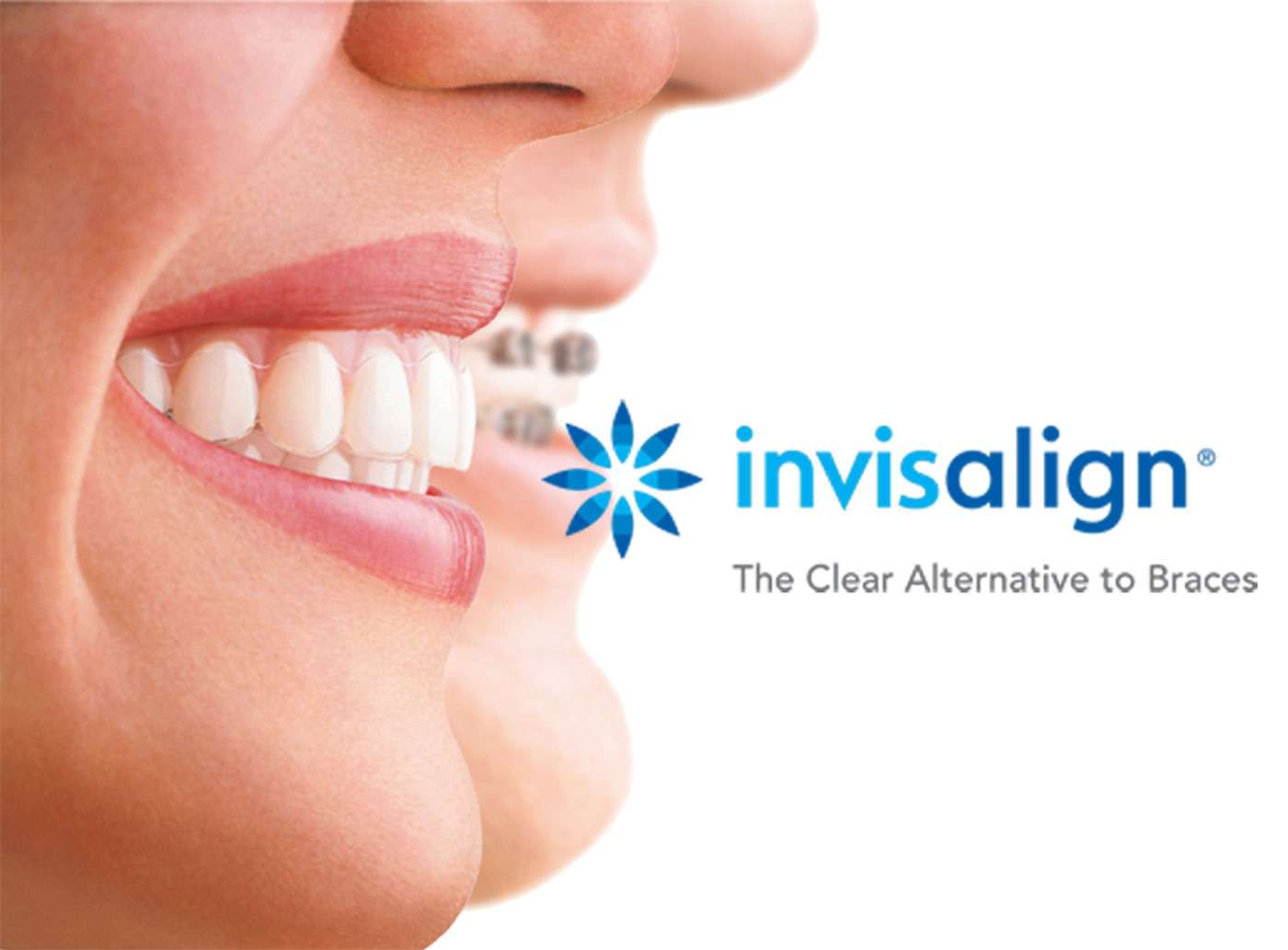Preserving Oral Health While Utilizing Invisalign: Tips for a Smooth Experience
Preserving Oral Health While Utilizing Invisalign: Tips for a Smooth Experience
Blog Article
Invisalign vs. Conventional Braces: Which Choice Is Right for You?
When taking into consideration orthodontic treatment, the choice between Invisalign and standard dental braces offers several important elements that merit cautious examination. Invisalign supplies a very discreet choice with removable aligners, while traditional braces offer a much more visible yet efficient service for serious misalignment. Each choice includes distinct benefits and drawbacks related to looks, convenience, therapy period, and expense. Comprehending these nuances is important for making a notified decision that aligns with your personal choices and way of living. The inquiry continues to be: which choice will finest meet your orthodontic needs and assumptions?
Summary of Treatment Options

In contrast, typical braces include steel braces and wires that are bound to the teeth. This approach applies continuous stress with time to achieve positioning. While reliable for complex orthodontic issues, standard dental braces call for regular sees for changes and can pose difficulties in keeping dental health due to the difficulty of cleaning up around cords and brackets.
Both options have their advantages, and the selection usually hinges on particular dental conditions, way of life preferences, and individual conformity. Eventually, consulting an orthodontic expert is important for determining one of the most ideal therapy plan tailored to private requirements. Comprehending the subtleties of each choice can considerably influence the overall success of orthodontic therapy.
Aesthetic Factors To Consider
A substantial variable influencing the choice in between Invisalign and conventional braces is the visual appeal each therapy provides. Invisalign aligners are crafted from clear plastic, making them virtually unseen when used.
In contrast, typical braces contain metal braces and cables, which can be extra obvious. While advancements in orthodontic modern technology have brought about the advancement of smaller sized brackets and tinted elastics, conventional dental braces still maintain an even more conspicuous account. For some individuals, the exposure of braces may hinder them from seeking essential treatment.
Eventually, the choice between Invisalign and typical braces may rest on personal preferences pertaining to looks. Patients who focus on discretion typically lean towards Invisalign, while those that are less concerned concerning presence may choose standard dental braces. Recognizing the aesthetic effects of each alternative is important for making an informed decision that straightens with one's way of living and choices.
Comfort and Convenience

In regards to ease, Invisalign aligners are detachable, allowing patients to appreciate their favored foods without restriction and preserve ideal oral health. Brushing and flossing are Get More Info streamlined, as the aligners can be obtained during these regimens, whereas typical braces call for cautious steering around braces and cords.
In contrast, standard braces demand routine modifications, making them less hassle-free for those with busy routines. Generally, the comfort and benefit of Invisalign make it an appealing option for many individuals seeking orthodontic therapy.
Therapy Period and Performance
While both Invisalign and typical braces are efficient in remedying dental misalignments, the duration of treatment can differ considerably between the 2 options. Commonly, Invisalign therapy can take anywhere from 12 to 18 months, depending on the intricacy of the situation. The clear aligners work by gradually moving teeth right into their preferred positions, and normal follow-ups with an orthodontist aid ensure progress remains on track.
In comparison, conventional click resources braces usually call for a longer dedication, typically varying from 18 months to 3 years. This results my review here from their fixed nature and the usage of cables and braces, which can be more effective for complicated cases and extreme misalignments (Invisalign). The therapy effectiveness of standard braces is well-documented, as they enable exact adjustments and better control over tooth motion
Inevitably, the choice in between Invisalign and standard dental braces may depend upon both the awaited therapy period and the certain dental problems handy. Consulting with an orthodontist is important, as they can offer customized referrals based upon specific requirements, making certain the picked method straightens with preferred outcomes and timeframes.
Price Contrast and Insurance Coverage Choices
Cost plays a considerable duty in the decision-making process for individuals thinking about orthodontic therapy, whether deciding for Invisalign or standard dental braces. On standard, the expense of Invisalign arrays from $3,000 to $8,000, while traditional braces normally cost between $2,000 and $6,000. Variables influencing these prices include the intricacy of the situation, the period of treatment, and geographical area.
Insurance policy coverage can dramatically impact out-of-pocket expenditures. Numerous oral insurance strategies provide partial insurance coverage for orthodontic treatments, however the specifics can differ commonly. It is critical for clients to assess their insurance coverage plans to determine the degree of insurance coverage for either choice. Normally, traditional braces might be extra frequently covered by insurance plans contrasted to Invisalign, which some insurance firms categorize as an aesthetic procedure.
Furthermore, a number of orthodontic techniques supply flexible layaway plan, making both treatment options much more easily accessible. People need to ask about potential financing options and discounts for upfront payments. Evaluating the total cost, including insurance advantages and settlement strategies, is crucial for making an educated choice that straightens with both visual preferences and budget plan considerations.

Final Thought
In summary, the option between Invisalign and traditional braces rests on numerous aspects, consisting of aesthetic preferences, convenience, therapy duration, and cost. Invisalign offers a very discreet, detachable choice that helps with oral health and nutritional versatility, while conventional dental braces might be better for complex oral problems and frequently come at a reduced cost point. Inevitably, examination with an orthodontist is necessary to evaluate individual conditions and figure out the most ideal treatment option for attaining ideal oral positioning.
When considering orthodontic therapy, the choice in between Invisalign and conventional braces provides several crucial elements that warrant careful analysis.Comparing Invisalign and typical braces discloses unique therapy options for orthodontic improvement.While both Invisalign and conventional dental braces are effective in remedying dental misalignments, the period of treatment can differ significantly in between the 2 choices.Price plays a significant function in the decision-making procedure for individuals thinking about orthodontic therapy, whether opting for Invisalign or standard dental braces.In summary, the option in between Invisalign and traditional braces pivots on numerous elements, consisting of visual choices, comfort, treatment period, and price.
Report this page